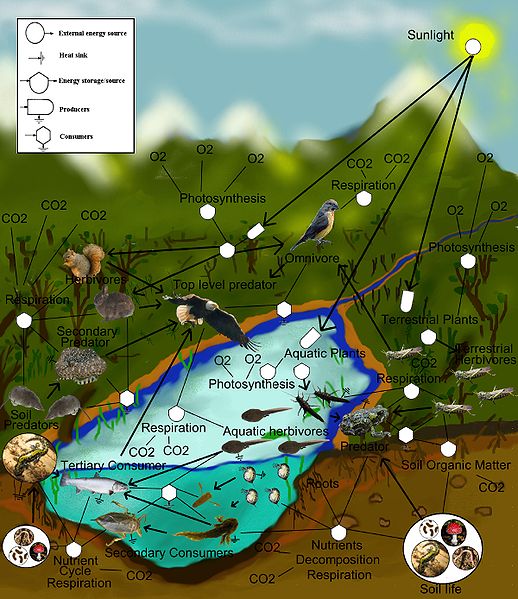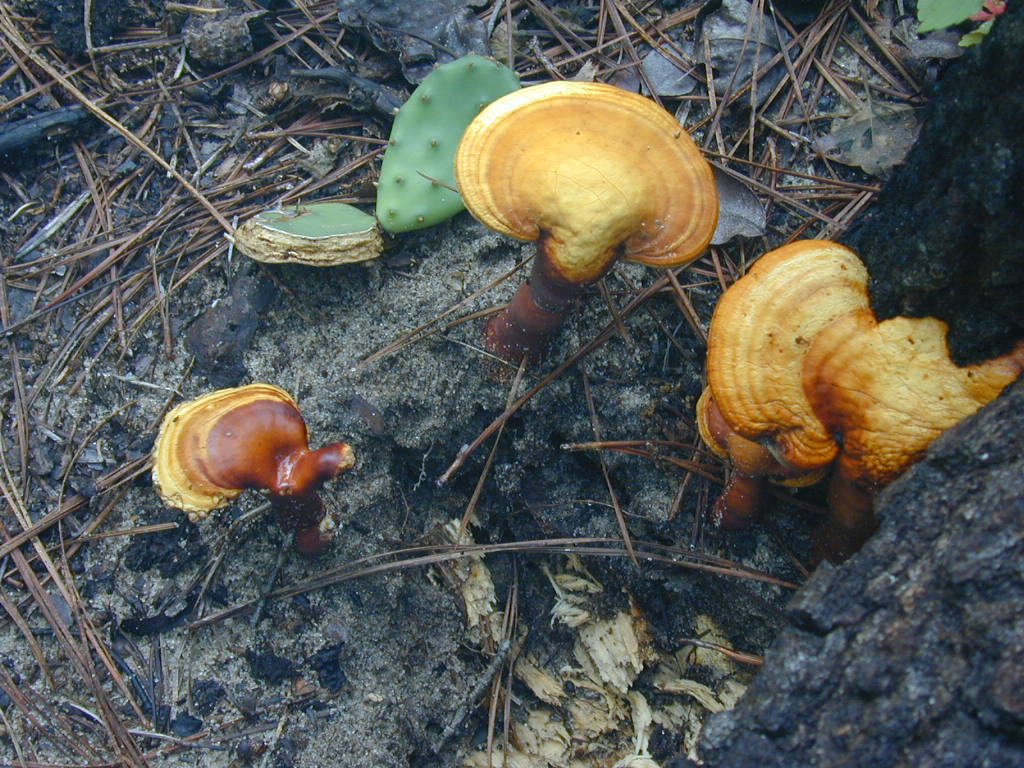Nutrition
 Ganoderma
lucidum, like all fungi is a heterotrophic organism.
In most ecological situations, this fungus is seen as a
saprophyte. A saprophyte is an organism that feeds on the
organic tissue of a dead organism. The fact that they are
a valuable saprophyte means that they are valuable decomposer
for the recycling of nutrients for the other organisms to use.
For G. lucidum, the dead tissue is normally from some
sort of tree, which can vary with location.
Ganoderma
lucidum, like all fungi is a heterotrophic organism.
In most ecological situations, this fungus is seen as a
saprophyte. A saprophyte is an organism that feeds on the
organic tissue of a dead organism. The fact that they are
a valuable saprophyte means that they are valuable decomposer
for the recycling of nutrients for the other organisms to use.
For G. lucidum, the dead tissue is normally from some
sort of tree, which can vary with location.
 However, it should be noted that in some
cases it is actually a parasite that attacks living trees.
A parasite is a symbiotic relationship where one organism
benefits at the cost of another organism. This type of
relationship can also be seen with the
American Mistletoe or the
Deer Tick.
The hyphae penetrate the tree at an injured or weakened
area. Given this
opportunity, it can cause the tree great harm.
However, it should be noted that in some
cases it is actually a parasite that attacks living trees.
A parasite is a symbiotic relationship where one organism
benefits at the cost of another organism. This type of
relationship can also be seen with the
American Mistletoe or the
Deer Tick.
The hyphae penetrate the tree at an injured or weakened
area. Given this
opportunity, it can cause the tree great harm.
Like all fungi, G. lucidum digests its food before it ingests it. This means that digestive exoenzymes are released from the tip of the hyphae to break down the organic material. Then, after the material has been broken down into simpler molecules, the hyphal strand ingests the food source. Once absorbed into the hyphae, the food molecules are shipped throughout the rest of the mycelium.
Click on
Reproduction to see the life cycle and reproduction of G. lucidumBack to Adaptations Ganoderma lucidum Home